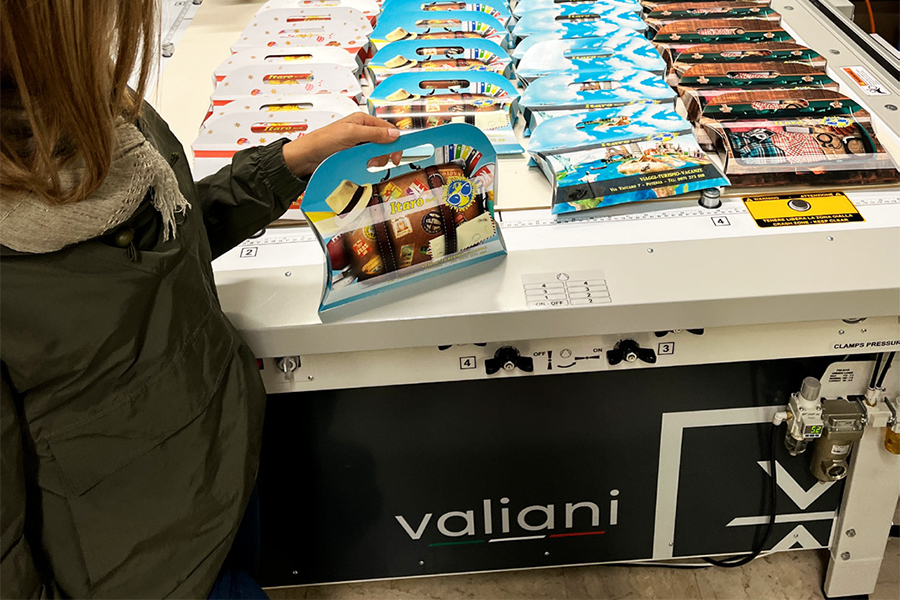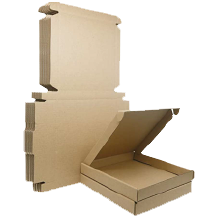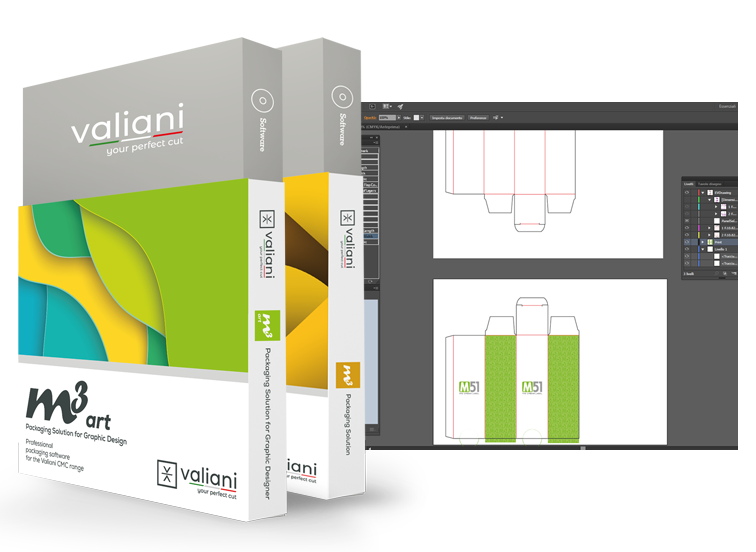Make it or Buy it? Outsourcing vs In-House production in the printing and cutting industry

Published in Specialist Printing World Wide | Issue 3 2022
Anyone committed in the print and packaging industry does not stop from wondering whether it is moreprofitable and advantageous for his or her company to outsource some projects to third parties or to buy a machinery for making in-house production, thereby being dependent on none.
For sure it is not something you can decide a priori in a few weeks, but it is something to be accurately pondered well in advance. Sometimes it takes even months or years to take the final decision. What is undoubtedly true is that people are asking themselves more and more such a question, now more than ever in times where shipments, deliveries and raw materials supply are becoming more and more costly.
The rise in the cost of these services has been leading a lot of companies to acquire a digital cutting or printing machine to finally having a full control on the workflow and to be able to respond promptly to market demands, overnight too if necessary.
The right questions we must ask ourselves
The first question to be asked is whether I am going to recover the money spent to acquire a printing or cutting equipment and how long this will take. In modern times, print and packaging markets are becoming more and more cost-effective, due to the boom that has been characterizing such industries.
Buying a cutting equipment might be very expensive, especially if you opt for European-made goods, created with high-quality components and equipped with advanced software. But companies wishing to invest in machines like these, need necessarily focus on the long term rather than on the short one. Investment has always been risky and hazardous, but if you do not invest, you cannot claim to grow as a leading company.
The Advantages of Buying
Let’s now dig into the main benefits of buying your own printer or cutting machine, with respect to outsourcing. First of all, outsourcing means relying on someone else, thus representing a limit to growth.
Outsourcing is also costly because you cannot produce what you desire without thinking about the additional costs that you have to consider while entrusting some of your jobs to a third party. Also, while you outsource, you cannot supervise your works, you can only count on your supplier’s tastes and devices,this translates into a lesser capacity of evaluating the quality of the work in the preparation of items.
Any printing press or packaging company cannot escape from having one or more machines dedicated to a specific function. It is not by chance that major companies are completely independent and autonomous from anyone else and can realize the most sophisticated and artistical jobs since they have an internal department dedicated to graphics, research and development, with laminators, printers, plotters, inkjet and so on and so forth.
The market trends
Furthermore, another point to be highlighted when it comes to a decision like this is to take into account the current trends of these two industries. Nowadays it is becoming increasingly evident that marginality is higher for short runs than for longer runs. Companies are now looking at personalized and 100% customized items, lesser quantities, but tailor-made.
This is particularly true in the sign and packaging markets, where restaurants, cafes, food and beverage companies, stationery shops and businesses of every kind, want to receive as many different jobs as possible in a very quick time.

The Importance of Customization
Customization is at the core of this tendency. This cannot be made for instance when it comes to the so-called die-cutting process, ideal for high production since it enables to get thousands of boxes in a little time, but all identical, one like the other.
As most enterprises do not care too much about large quantities, this is how we explain the tremendous rise of cutting plotters in a sector like this. Cutting plotters allow to create several jobs, each of one is totally different from the other, thus respecting the “personalization” creed.
Also, cutting machines are ideal for short and medium runs, are very versatile as well and lead companies to move around a wide range of business activities, from packaging to signage, from apparel to finishing operations, from printing to coating.
There are many companies at the international level with a long and successful history behind which have been providing incredibly reliable and sturdy equipment, designed to last for fifteen or twenty years.
The reasoning could be “spend today to earn tomorrow”. Moreover, when you are in possession of a machine, you know how long it took to produce something and as a result you are the one to establish the right price for customers who are interested in the products created with your own machinery.
Also, onething is to make a simple box, another thing is to add a writing or a decoration on it, making a bevel or a kiss-cut. With a cutting plotter all these possibilities are now at everyone’s reach.


DIY cardboard pizza boxes

Valiani packaging die-cutting software
So, What to Choose?
Ultimately, what is right to do? Make it or buy it? In light of this article, probably “make it” could be the solution. In a sector where standing out in the crowd is absolutely necessary, the purchase of a cutting machine or a printer seems to be the way.
But at the same time, it is always recommended a well-thought business plan, where you can compare costs and revenues, both on the short and on the long term so as to have a 360° vision of what the expense will be like.
Starting from scratch a new activity is always risky and may seem to be dangerous, but it could also represent the turning point of your career, enabling you to make a step forward in a highly competitive field.
The return on investment is ensured because customers appreciate quality, precision and prompt deliveries and when they feel comfortable with a service provider, they will find it hard to change suppliers.
In the manufacturing world, companies must choose where they make their products. Many companies choose to outsource this work to other companies, assuming to save money.
Even if you build relationships with manufacturing suppliers, there are also many reasons to consider manufacturing products in-house instead.
As the owner of a company with a new product, you might wonder why you should keep manufacturing in-house. In-house production may in fact be cheaper and more efficient than outsourcing.


